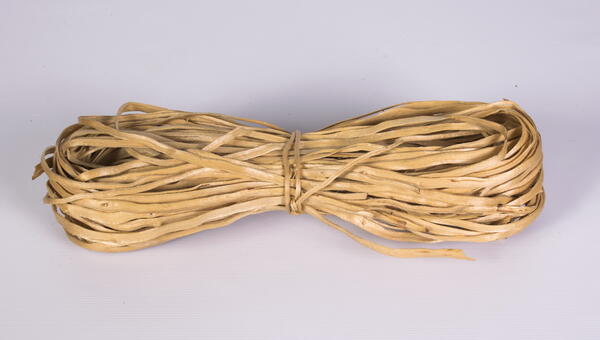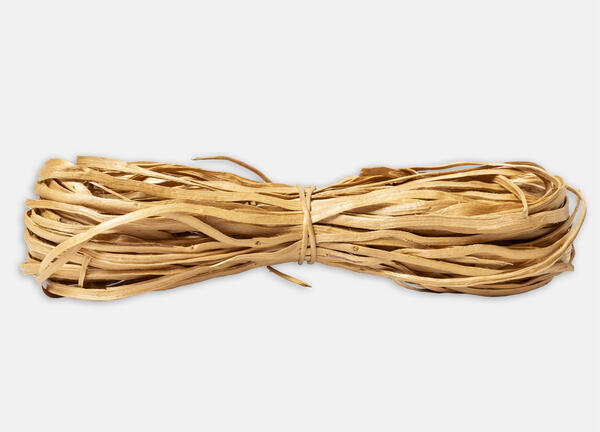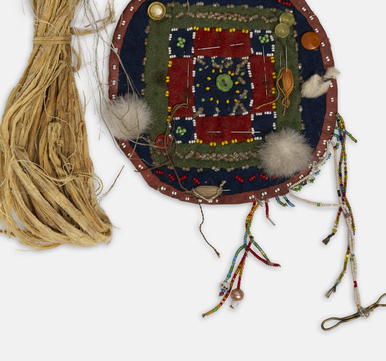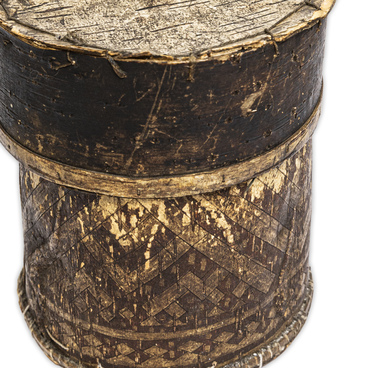Cedar has always been of great value for the indigenous peoples of the North: it provides them with valuable nuts, precious wood, and roots. Cedar root is elastic and strong compared to the roots of other trees. It is also distinguished by retaining its properties for a long time: if a cedar root ribbon is soaked in water several years after it was made, it can be processed again.
Cedar root can be used to build houses, weave fish traps, cradles, and household items. Working with cedar root was traditionally considered a man’s craft as it required great physical strength. Recently, due to the widespread use of synthetic materials, the need for using cedar root has been on the decline and the art of working with this material has been falling further and further into obscurity.
A high-quality cedar tree was selected in a pine forest: it was required to have a smooth surface, a living crown, and no dead branches. The ground was cut two meters away from the trunk with a blunt ax so as not to damage the rootstock. Once a root was found, the craftsman would evaluate its quality. If the root was unsuitable, it was carefully placed back in the ground. A high-quality root was cut off, but not much was taken from one cedar so as not to kill the tree.
The obtained root was processed: it was cut with a knife into five triangular pieces, and the core was separated and used as a binder. The remaining root with the bark was pulled through a special device by being pressed with a blunt knife. The root was flattened, the bark and irregularities were removed, and excess moisture was squeezed out. The result was a ribbon that could be used for weaving various objects.
A cedar root ribbon was thin and narrow, with a width of about five millimeters. The length depended on how the root was pulled out of the ground — only pieces of one and a half meters and longer were used. The working surface of a properly processed root should be smooth and shiny.
The root was obtained at a certain time in summer
and was stored in coils for future use. Wet root was processed — it is soft and
elastic, easy to pull, bend, and pierce without cracking.




